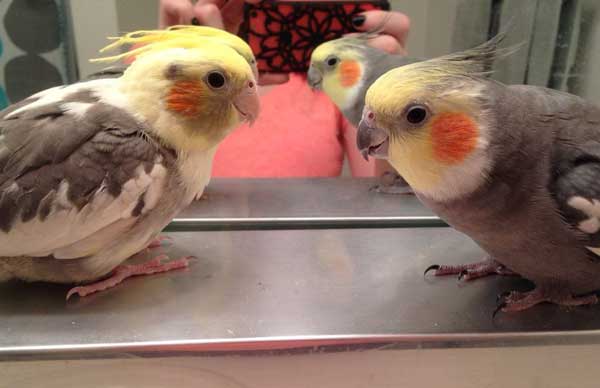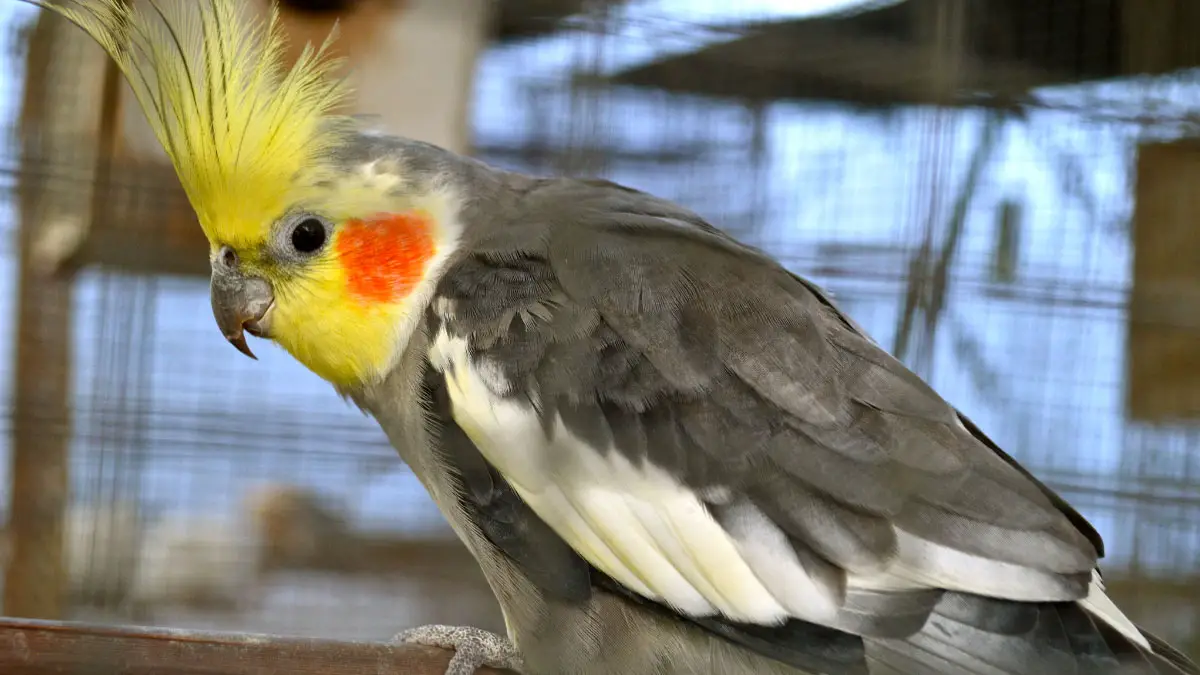Determining the age of a pet cockatiel can be challenging, as several factors can affect its physical development and appearance. However, with a little bit of knowledge and observation, it is possible to estimate the age of your feathered friend accurately.
So how to tell the age of your pet cockatiel? One of the most reliable methods is by examining the care and its feathers. Baby cockatiels have smooth, glossy feathers, while older birds may have a more matte or dull appearance.
Additionally, comparing a cockatiel’s behavior and physical development to its growth chart or age chart can also provide clues about its age. Now read this article and learn how to make an age chart to identify their age.
Knowing The Methods: How To Tell The Age Of Your Pet Cockatiel?
There are numerous approaches of determining this. As previously stated, there are two typical procedures; inspecting the cere and feather. Observing the behavior and physical growth is another way that may be useful as well. Let’s delve into the specifics of each of those strategies.

1. Examining the Cere
One of the most reliable methods for determining the age of a cockatiel is by examining the cere, which is the fleshy area above the beak that contains the nostrils.
In male cockatiels, the cere will typically be a light blue or grey color when they are young and will darken to a deeper blue or purple as they age. Female cockatiels, on the other hand, have a brown or pink cere when they are young, and will also darken with age.
If you want, you may create a male-female cockatiel cere chart. So that you can remember the age and the specification of this age’s male-female cere color.

One reminder, color may not be accurate for all individual cockatiels. The color and appearance of the cere may vary depending on various factors, including diet, genetics, and overall health.
Therefore, it is always a good idea to consult with a veterinarian or avian specialist for a more accurate assessment of a cockatiel’s age.
2. Examining the feathers
Another method for determining the age of a cockatiel is by examining its feathers. Baby cockatiels will have a smooth, glossy appearance to their feathers, while old cockatiel symptoms may include a more matte or dull appearance.

Moreover, the feathers of an older cockatiel may show signs of wear and tear, such as fraying or thinning.
3. Observing the Behavior and Physical Development
A third method for estimating the age of a cockatiel is by observing its behavior and physical development. By comparing your cockatiel’s behavior and physical characteristics to a cockatiel growth chart or age chart , you can get a better idea of how old they are.
In general, a 5-year-old cockatiel is regarded as mature, and a 10-year-old cockatiel is considered the equivalent of a 40-year-old person. Also, a 15-year-old cockatiel is considered an older cockatiel. However, these assumptions are not supported by solid reasoning.
Keep in mind that these approaches are all described in broad strokes. It is not necessary to use only these approaches. This is a recommendation that could be of assistance to you in some regard. It is fine if you have another approach that you use.
Exploring The Age Tracking Tips: How To Tell The Age Of Your Pet Cockatiel?
One of the best ways to keep track of your cockatiel’s age is by keeping a detailed record of its growth and development. This can include things like the date of their first flight, their first molt, and any other significant milestones.
You can also keep track of their feeding and care routine, as well as any health issues that may arise. However, if you are unsure of your cockatiel’s age when you first get them, you can ask the breeder or previous owner.

If this is not possible, you can consult with a veterinarian or avian specialist to get a more accurate estimate of your cockatiel’s age.
Making a Cockatiel Age Chart
A cockatiel age chart can be a useful tool for your pet cockatiel age identification. These charts typically provide information on the physical characteristics, behaviors, and milestones of cockatiels at different ages. Some common characteristics that may be included on a cockatiel age chart are,
Size
Baby cockatiels are typically smaller than adult birds, with a more delicate and slender appearance. As they grow, they will become larger and more robust.
Feathers
Baby cockatiels have smooth, glossy feathers, while older birds may have a more matte or dull appearance. Additionally, the feathers of an older cockatiel may show signs of wear and tear, such as fraying or thinning.

Behavior
Baby cockatiels are more active and playful, while older birds may be more subdued and less energetic. Such as the rainbow cockatiel. They are known for their ability to mimic sounds and can be taught to speak a few words or phrases.
There is some relationship between food and conduct. Not everyone feeds their pet cockatiel the same food. There are certain commonalities, but there are also considerable culinary variances.
Physical development
Cockatiels go through several stages of physical development as they grow, including the development of their cere, beak, and wings. A cockatiel age chart may provide information on the development of these physical characteristics at different ages.

Molt
Cockatiels go through a process called molting, where they shed their old feathers and grow new ones. This process can be an indication of a cockatiel’s age, as younger birds tend to molt more frequently than older birds.
In addition to these characteristics, a cockatiel age chart may also provide information on the typical lifespan of a cockatiel, as well as any common health issues that may arise at different ages.

By comparing the characteristics of your pet cockatiel to the information provided on a cockatiel age chart, you can get a better idea of their age. Thus you ensure that they receive the proper care and attention as they grow.
FAQs
Regarding this age-predicting matter of your pet cockatiel, there are a lot of things you might love to know. Hence, we went through a few frequently asked questions for you.
Cockatiels can live for a relatively long time, with an average lifespan of around 15-25 years. However, some individuals may live even longer, with some reports of cockatiels living into their 30s or 40s.
DNA testing can be another option for predicting the age of a cockatiel. While this method is not always reliable, it can provide a more accurate estimate of a cockatiel’s age based on its genetic makeup.
There is no exact age estimation. But you can consider a 5-year-old cockatiel an adult, a 10-year-old cockatiel a middle-aged, and a 15-year-old cockatiel as an older cockatiel.
Keep in mind that we are giving some general information. You might have more accurate information but what we are giving is a rough overview regarding a question.
Conclusion
If you are a new bird owner or are unsure of the age of your cockatiel, it is always a good idea to keep a cockatiel age chart handy. You may determine the age of your pet cockatiel by evaluating these characteristics in a cockatiel age calendar or growth chart.
Also, you can do that by checking with a veterinarian or avian specialist. In conclusion, it is quite difficult to measure the actual age of a species. But if it is a species like a cockatiel, you may have some chances to keep some records or get some idea about how it is aging.








